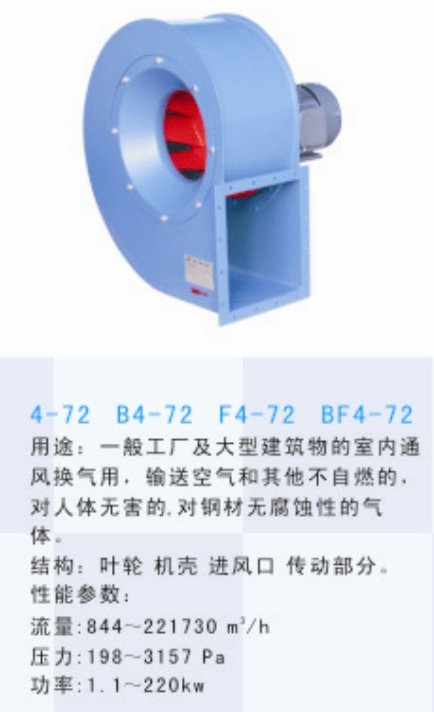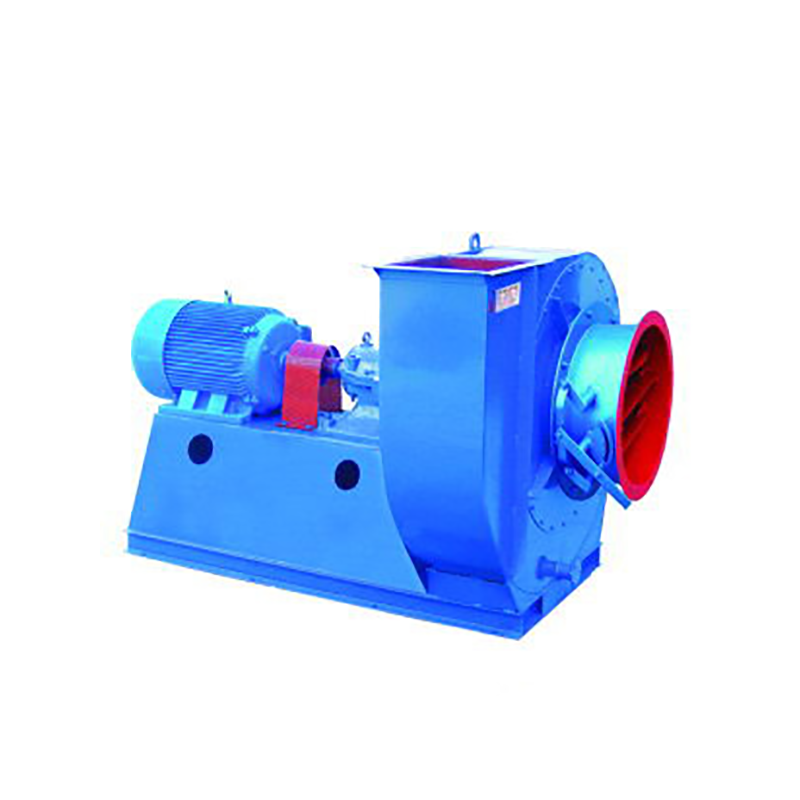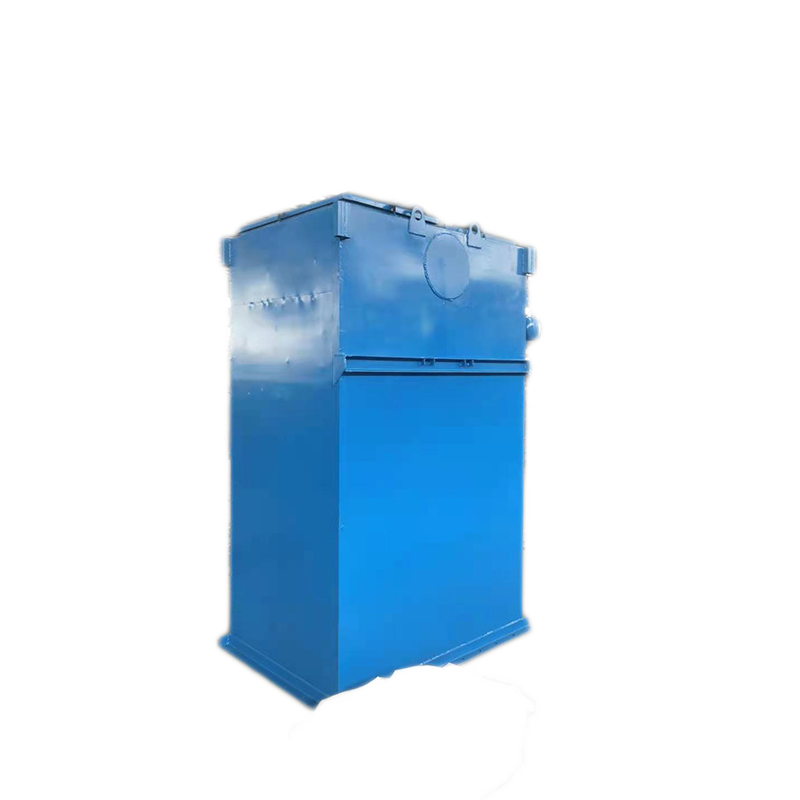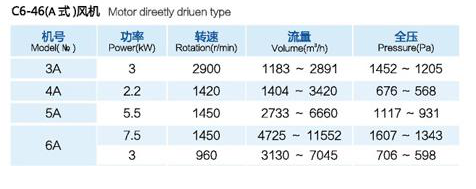(2) Precautions for normal operation of fan 1. If the flow is found to be too large, which does not meet the operating requirements, or less flow is required in a short time, the throttling device can be used to adjust to meet the operating requirements. 2. The sensitivity of thermometer and oil pointer shall be checked regularly. 3. In case of any abnormal phenomenon during the start-up, shutdown or operation of the fan, it shall be checked in time. 4. For minor faults found in the inspection, find out the causes in time and try to eliminate or deal with them. If minor faults cannot be eliminated or major faults are found, repair them immediately. 5. In addition to replacing the lubricating oil during each maintenance, the lubricating oil shall also be replaced regularly. Observe the oil level at ordinary times and replenish lubricating oil in time.

3. When installing Type C and Type B, ensure that the two pulley positions are on the same plane, and the flatness tolerance is 0.5mm. 4. When installing Type D, use a dial indicator and feeler gauge to measure the coaxiality of the fan spindle and motor spindle and the parallelism of both ends of the coupling. The coaxiality tolerance of two shafts is 0.2mm, the parallelism tolerance of both ends of the coupling is 0.2mm, and the spacing between two planes of the coupling is 5 to 8mm. 5. After the fan is installed, move the rotor with hand or lever to check whether it is too tight or collided. The test run can be carried out without overtightening or collision. 6. After the motor is installed, the belt pulley or coupling guard shall be installed. If the air inlet is not connected to the air inlet pipe, the guard net or other safety devices (provided by the user) shall also be provided. 7. Other parts shall be installed according to the corresponding positions in the drawing. 8. Add N46 (ISO VG46, 30) in summer and N32 (ISO VG32, 20) in winter. The oil level should be at 1/2 of the oil window.

Main factors affecting the dust removal efficiency of wet electrostatic precipitator. The effect of electrostatic voltage, water volume and dust concentration on wet electrostatic precipitation efficiency is positive, that is, the dust removal efficiency increases with the increase of voltage, water volume and dust concentration. Among them, voltage has the most significant effect on dust removal efficiency, followed by water volume, and dust concentration has the least effect. The combination of static electricity and water mist can significantly improve the dust removal efficiency. The role of water in wet electrostatic precipitation. The water in wet electrostatic precipitator mainly exists as atomized water droplets. According to domestic research, water mist has a series of effects on the improvement of dust removal efficiency of wet electrostatic precipitator, large Wet electrostatic precipitator Main mechanism: the water mist can keep the discharge electrode clean and keep the corona vigorous; The mist particles strike the dust collecting electrode to form a thin and uniform water film, Qinzhou Wet electrostatic precipitator It can prevent the "secondary flying" of low specific resistance dust from tempering high specific resistance dust and prevent the occurrence of "reverse corona"; For the dust with strong viscosity, the electrode can be prevented from sticking; It is also suitable for collecting those flammable and explosive dust. The water mist is sprayed directly to the discharge electrode and corona area, and the discharge electrode also acts as an atomizer. The same power supply can realize corona discharge, water atomization, water mist and dust particle charging, realizing the organic combination of static electricity and water mist. The water mist is directly sprayed to the discharge electrode, which has a high charge. The collision interception, adsorption and coagulation of water mist with high charge mass ratio in the electric field can greatly improve the dust removal efficiency. The water mist strikes the dust collecting electrode to form water flow down, so that the dust collecting electrode is always kept clean, eliminating the vibrating device, and avoiding a series of problems caused by vibrating dust removal in dry dust removal. In the method of spraying water mist to the discharge electrode and corona area to further atomize the water mist, the static electricity does not directly contact the spray device, so there is almost no insulation problem. This method is completely different from the dedusting technology of "corona discharge atomizes water". The latter is almost impossible to insulate due to the direct contact between water and electricity, and it is actually difficult to achieve industrial application. The barbed electrode can produce a strong electrostatic field, and has a good corona discharge capacity. The electrostatic and water mist work together, and has a high dust removal efficiency

Gas compression and gas transmission machinery is a machine that converts rotating mechanical energy into gas pressure energy and kinetic energy and transports gas. The main structural components of the fan are impeller, casing, air inlet, support, motor, pulley, coupling, silencer, transmission parts (bearings), etc. large Wet electrostatic precipitator The unpowered fan uses the air thermal convection caused by the natural wind force and the indoor and outdoor temperature difference to drive the turbine to rotate, thus using the centrifugal force and negative pressure effect to exhaust the indoor stale hot air. Qinzhou Wet electrostatic precipitator manufactor The fan is related to the transmission and distribution energy consumption of the system, and is a very critical part of building energy conservation. According to the fan inspection conducted by the National Air Conditioning Equipment Quality Supervision and Inspection Center for many years, many fans have problems under rated conditions, so it is necessary to produce and manufacture fans in strict accordance with product standards. large Wet electrostatic precipitator At the beginning of the fan operation, the vibration of the bearing is very small, but with the extension of the operating time, the dust in the fan will be unevenly attached to the impeller, gradually destroying the dynamic balance of the fan, making the bearing vibration gradually increase. Once the vibration reaches the maximum allowable value of 11mm/s of the fan (the maximum allowable value expressed by the amplitude value is as follows), The fan must be shut down for repair (dust accumulation shall be removed and dynamic balance shall be redone). Because it is very dangerous at this time, users must not use it forcibly. When the fan vibration is close to the dangerous value, the vibration measuring instrument will give an alarm.




